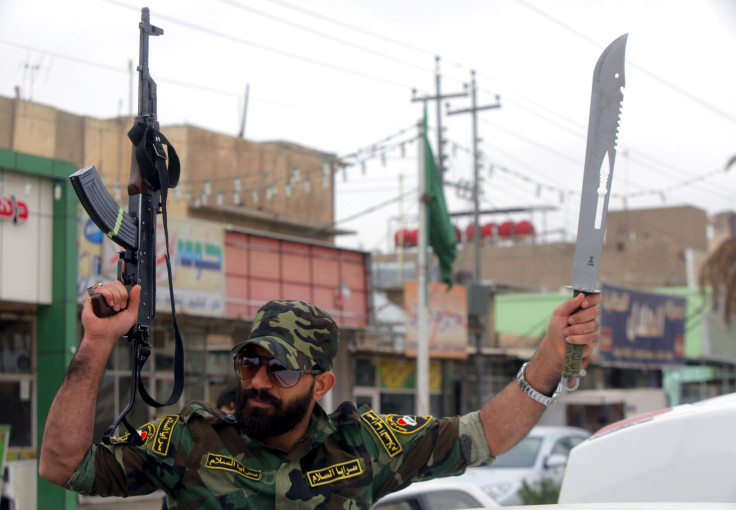In Tikrit, Iraqi Militias Get Ready To Assault ISIS-Held City: 'Today Will Be A Big War'

TIKRIT, Iraq -- In the early hours of Thursday morning, as Iraqi militiamen prepared to launch an assault to retake this city, they said that sectarian divisions among the fighters were delaying their offensive. But they vowed that those disagreements between Sunni and Shia fighters, while they probably will never be completely resolved, would not stand in the way of a new push against the Islamic State group.
"Today will be war. A big war, and we will win," one of the fighters said from the front of a red pickup truck. He was traveling to Tikrit with dozens of other men who had been waiting in Baghdad for over a week, while their officers came up with a strategy to dislodge the Islamic State group from this key town 110 miles (180 kilometers) to the north.
He was with Hashd al Shabi, the umbrella group that consists of thousands of Iraqi volunteer fighters, largely Shiites but also including Sunnis and even Christians. His optimism is not borne out by the facts so far; a previous assault on Tikrit by paramilitary militias and the Iraqi Army was called off when it became clear that the assailants lacked enough manpower as well as intelligence about ISIS activity in the city.
Iraqi officials said the ground offensive would begin Friday. Retaking Tikrit from the group also known as ISIS or ISIL is a major step in the push to dislodge the militants from Mosul, the second-biggest Iraqi city, 140 miles (220 kilometers) north.
As well as the Iran-backed Shia militias moving toward the town from the south, there are hundreds more fighters housed in the buildings of the University of Tikrit to the north of the city, which was turned into a de facto headquarters while the operation was on hold. They, too, are waiting for the signal to begin attacking.
At some points in the past month, fighters here said, they thought there were only a few militants left in Tikrit. They sent their men into the center of the city, only to realize that the group was still strong and active there. That's when the Hashd al Shabi, also known as the Popular Mobilization Forces, pulled back. They needed more men. They needed more support.
They finally got it Wednesday night, in the form of airstrikes by a U.S.-led coalition, including American and Iraqi warplanes. Bombs and missiles rained down on ISIS targets in the suburbs of Tikrit -- but the men of Hashd al Shabi waiting to pounce on the city said the coalition did not hit the Sunni militant group in the center of Tikrit. They only targeted neighborhoods east of town.
That meant that the improvised explosive devices (IEDs), and even the dead bodies that ISIS routinely booby-traps with explosives, were still intact on the battlefield within Tikrit. Those devices, said the fighters, have been hindering the Iraqi offensive in the city and would still pose a problem. There are few among them who know how to defuse the devices.
"That's the ISIS strategy. Just snipers and IEDs," one fighter said as his truck approached a base outside Tikrit. "That's the only thing that they are good at. Now we know."
© Copyright IBTimes 2024. All rights reserved.





















